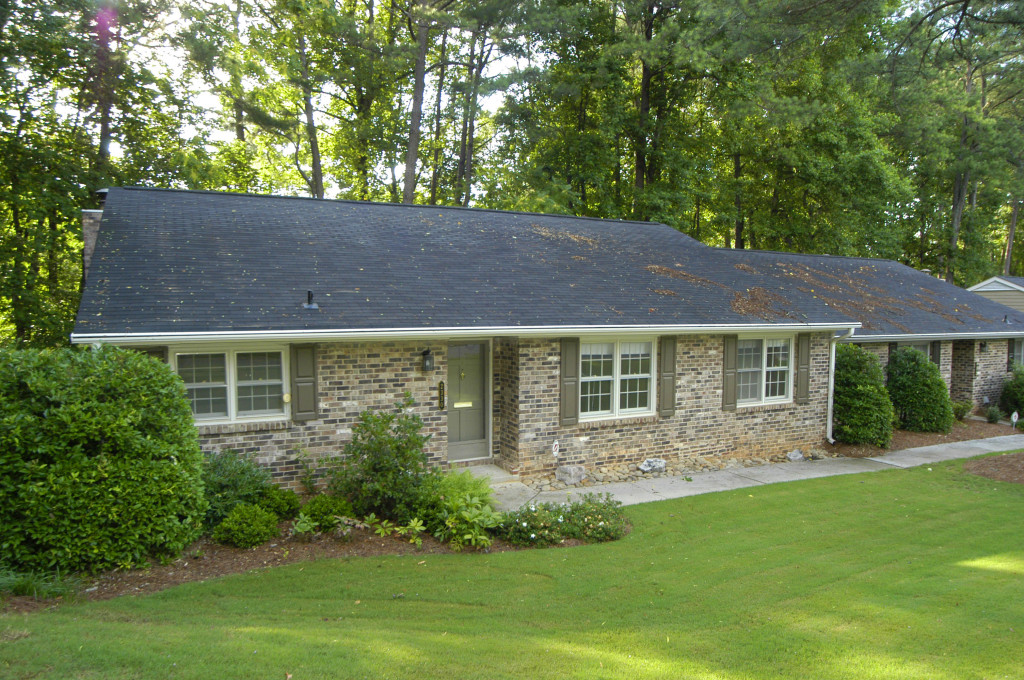NAR REPORTS: Existing Home Sales Decline in May
Existing Home Sales Decline in May
 Tough news as existing home sales decline in May. As a member of the Nationl Association of Realtors, I support a professional organization representing Brokers and real estate sales persons from all over the United States. One service of the NAR is monthly economic reports about the health of the national housing markets. In a nutshell, the news was not good for May 2011:
Tough news as existing home sales decline in May. As a member of the Nationl Association of Realtors, I support a professional organization representing Brokers and real estate sales persons from all over the United States. One service of the NAR is monthly economic reports about the health of the national housing markets. In a nutshell, the news was not good for May 2011:
“Existing home sales decline in May as temporary factors and financing problems weighed on the market, according to the National Association of Realtors®.
Existing-home sales1, which are completed transactions that include single-family, townhomes, condominiums and co-ops, fell 3.8 percent to a seasonally adjusted annual rate of 4.81 million in May from a downwardly revised 5.00 million in April, and are 15.3 percent below a 5.68 million pace in May 2010 when sales were surging to beat the deadline for the home buyer tax credit.
Lawrence Yun, NAR chief economist, said temporary factors held back the market in May, as implied from prior data on contract signings. “Spiking gasoline prices along with widespread severe weather hurt house shopping in April, leading to soft figures for actual closings in May,” he said. “Current housing market activity indicates a very slow pace of broader economic activity, but recent reversals in oil prices are likely to mitigate the impact going forward. The pace of sales activity in the second half of the year is expected to be stronger than the first half, and will be much stronger than the second half of last year.
Yun said the market also is being constrained by the lending community. “Even with recent economic softness, this is a disappointing performance with home sales being held back by overly restrictive loan underwriting standards,” he said. “There’s been a pendulum swing from very loose standards which led to the housing boom to unnecessarily restrictive practices as an overreaction to the housing correction – this overreaction is clearly holding back the recovery.”
There were notable regional differences in home sales. “A large decline in Midwestern existing-home sales can be attributed partly to the flooding and other severe weather patterns that occurred, but this also implies a temporary nature of soft market activity,” Yun explained.
The national median existing-home price2 for all housing types was $166,500 in May, down 4.6 percent from May 2010. Distressed homes3 – typically sold at a discount of about 20 percent – accounted for 31 percent of sales in May, down from 37 percent in April; they were 31 percent in May 2010.
“The price decline could be diminishing, as buyers recognize great bargain prices and the highest affordability conditions in 40 years; this will help mitigate further price drops,” Yun said.
“Home prices are rising or very stable in local markets with improved employment conditions, such as in North Dakota, Alaska, Washington, D.C., and many parts of Texas,” Yun noted.
NAR President Ron Phipps, broker-president of Phipps Realty in Warwick, R.I., said a number of proposals being considered in Washington could further jeopardize the housing recovery. “We’re concerned about the flow of available capital, including a possible rule that would effectively raise minimum downpayment requirements to 20 percent,” he said. “We don’t need to throw the baby out with the bath water – increasing downpayment requirements would effectively shut many qualified families out of the market. What we critically need is a return to the basics of providing safe mortgages to creditworthy buyers willing to stay well within their budget.”
According to Freddie Mac, the national average commitment rate for a 30-year, conventional, fixed-rate mortgage was 4.64 percent in May, down from 4.84 percent in April; the rate was 4.89 percent in May 2010. “Although low mortgage interest rates are welcome, they are less meaningful compared to the tightness of loan underwriting standards,” Yun noted.
Total housing inventory at the end of May fell 1.0 percent to 3.72 million existing homes available for sale, which represents a 9.3-month supply4 at the current sales pace, up from a 9.0-month supply in April.
All-cash transactions stood at 30 percent in May, down from 31 percent in April; they were 25 percent in May 2010; investors account for the bulk of cash purchases.
First-time buyers purchased 35 percent of homes in May, down from 36 percent in April; they were 46 percent in May 2010 when the tax credit was in place. Investors accounted for 19 percent of purchase activity in May compared with 20 percent in April; they were 14 percent in May 2010.
Single-family home sales declined 3.2 percent to a seasonally adjusted annual rate of 4.24 million in May from 4.38 million in April, and are 15.4 percent below a surge to 5.01 million one year ago. The median existing single-family home price was $166,700 in May, down 4.5 percent from May 2010.
Existing condominium and co-op sales fell 8.1 percent to a seasonally adjusted annual rate of 570,000 in May from 620,000 in April, and are 14.7 percent below the 668,000-unit pace in May 2010. The median existing condo price5 was $165,400 in May, which is 5.8 percent below a year ago.
Regionally, existing-home sales in the Northeast declined 2.5 percent to an annual level of 770,000 in May and are 13.5 percent below May 2010. The median price in the Northeast was $241,500, up 6.1 percent from a year ago.
Existing-home sales in the Midwest dropped 6.4 percent in May to a pace of 1.02 million and are 22.7 percent below a year ago. The median price in the Midwest was $136,400, which is 8.5 percent below May 2010.
In the South, existing-home sales fell 5.1 percent to an annual level of 1.85 million in May and are 14.4 percent below May 2010. The median price in the South was $149,200, down 3.1 percent from a year ago.
Existing-home sales in the West were unchanged at an annual pace of 1.17 million in May but are 10.0 percent lower than a year ago. The median price in the West was $192,300, which is 12.6 percent below May 2010.
The National Association of Realtors®, “The Voice for Real Estate,” is America’s largest trade association, representing 1.1 million members involved in all aspects of the residential and commercial real estate industries.
# # #
NOTE: NAR also tracks monthly comparisons of existing single-family home sales and median prices for select metropolitan statistical areas, which is posted with other tables at: www.realtor.org/research/research/ehsdata. For information on areas not included in the report, please contact the local association of Realtors®.
1Existing-home sales, which include single-family, townhomes, condominiums and co-ops, are based on transaction closings. This differs from the U.S. Census Bureau’s series on new single-family home sales, which are based on contracts or the acceptance of a deposit. Because of these differences, it is not uncommon for each series to move in different directions in the same month. In addition, existing-home sales, which generally account for 85 to 90 percent of total home sales, are based on a much larger sample – more than 40 percent of multiple listing service data each month – and typically are not subject to large prior-month revisions.
The annual rate for a particular month represents what the total number of actual sales for a year would be if the relative pace for that month were maintained for 12 consecutive months. Seasonally adjusted annual rates are used in reporting monthly data to factor out seasonal variations in resale activity. For example, home sales volume is normally higher in the summer than in the winter, primarily because of differences in the weather and family buying patterns. However, seasonal factors cannot compensate for abnormal weather patterns.
Single-family data collection began monthly in 1968, while condo data collection began quarterly in 1981; the series were combined in 1999 when monthly collection of condo data began. Prior to this period, single-family homes accounted for more than nine out of 10 purchases. Historic comparisons for total home sales prior to 1999 are based on monthly single-family sales, combined with the corresponding quarterly sales rate for condos.
Benchmark Revisions: All major statistical data series go through periodic reviews and revisions to ensure that sampling and methodology keep up with changes in the market, such as population changes in sampled areas, to ensure accuracy. NAR began its normal process for benchmarking sales earlier this year; there will be no change to median prices. In the past we’ve benchmarked to the decennial Census, most recently to the 2000 Census, because it included home sales data. However, the data are no longer included in the Census, so we’re looking at more frequent benchmarking using a new approach with independent sources to improve our process and modeling. As always, we are consulting with various outside housing economists, government agencies and academic experts for a consensus on the methodology; NAR is committed to providing accurate, reliable data. Publication of the revisions is expected this summer; we will notify a month in advance of the publication date.
2The only valid comparisons for median prices are with the same period a year earlier due to the seasonality in buying patterns. Month-to-month comparisons do not compensate for seasonal changes, especially for the timing of family buying patterns. Changes in the composition of sales can distort median price data. Year-ago median and mean prices sometimes are revised in an automated process if more data is received than was originally reported.
3Distressed sales, first-time buyers, investors, contract cancellations and all-cash transactions are from a survey for the Realtors® Confidence Index, posted at Realtor.org.
4Total inventory and month’s supply data are available back through 1999, while single-family inventory and month’s supply are available back to 1982 (prior to 1999, condos were measured quarterly while single-family sales accounted for more than 90 percent of transactions).
5Because there is a concentration of condos in high-cost metro areas, the national median condo price often is higher than the median single-family price. In a given market area, condos typically cost less than single-family homes.
The Pending Home Sales Index for May will be released June 29, and existing-home sales for June is scheduled for July 20; release times are 10:00 a.m. EDT.
Information about NAR is available at www.realtor.org. This and other news releases are posted in the News Media section. Statistical data in this release, other tables and surveys also may be found by clicking on Research.
REALTOR® is a registered collective membership mark which may be used only by real estate professionals who are members of the NATIONAL ASSOCIATION OF REALTORS® and subscribe to its strict Code of Ethics. Not all real estate agents are REALTORS®. All REALTORS® are members of NAR.”
If you are a home seller and this report causes you to heart burn, let me just say….I understand. I own a substantial amount of residential real estate and my net worth seems to drop weekly. Many of my home sellers report feeling “seller fatigue”. The continued bad news just wears you out.
If you need to know the straight story about real estate in metro Atlanta, give me a call. You will not get the used car sales person pitch. I will answer your questions in a straight forward manner and not harrass you about listing your home. However, I do not candy coat the message. Prices and values have dropped. Sellers will have to adjust to a new metro Atlanta housing market.
